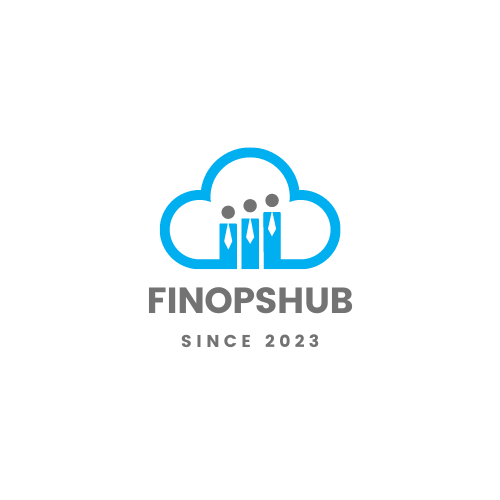Effective cloud financial management is essential for optimizing your organization’s cloud spending, aligning financial strategies with operational goals, and ensuring accountability. Central to this process is multi-cloud tagging.
Importance of Cloud Tagging
Cloud tagging involves assigning metadata to cloud resources, making it easier to manage, track, and allocate costs accurately. Implementing a well-defined tagging strategy is crucial for effectively managing cloud resources. By attaching tags to specific resources, you can:
- Enhance Visibility: Tags provide comprehensive insights into your cloud environment, showing how resources are being used across various services and departments.
- Optimize Resource Management: Tags facilitate improved resource management by offering clear categorization, helping you identify underutilized resources and opportunities for optimization.
- Simplify Cost Forecasting: Accurate cost projection is critical for financial planning. Tags assist in cost forecasting by enabling detailed tracking of resource usage and associated expenses.
- Support Automation: Automating tagging processes ensures consistency and accuracy, streamlining cloud management practices.
Benefits of Proper Cloud Tagging
Proper cloud tagging offers numerous benefits that extend beyond basic resource identification. Some key advantages include:
- Accurate Cost Allocation: By leveraging tags, you can allocate costs precisely to specific projects, departments, or teams. This drives accountability and improves visibility into spending patterns.
- Informed Decision-Making: Tags provide crucial data for decision-making by showing which resources consume the most budget, enabling strategic adjustments.
- Enhanced Operational Efficiency: Tags can identify resources requiring operational or security practices, ensuring that your cloud environment remains efficient and secure.
- Trust in Cost Distribution: A solid tagging strategy ensures accurate data for cost distribution, promoting trust in the allocation process and aiding financial reconciliation.
| Benefit | Description |
|---|---|
| Accurate Cost Allocation | Assigning costs to specific projects or departments, driving accountability and visibility. |
| Informed Decision-Making | Using tags for strategic adjustments based on spending patterns. |
| Enhanced Operational Efficiency | Identifying resources needing specific operational or security practices. |
| Trust in Cost Distribution | Ensuring accurate cost distribution data for financial reconciliation. |
For more insights on managing costs across multiple cloud providers, check our guide on manage costs across multiple cloud providers.
The importance and benefits of multi-cloud tagging cannot be overstated in FinOps. For detailed strategies on implementing effective tagging, see implementing effective tagging strategies. If you want to dive deeper into the principles guiding FinOps, explore FinOps principles.
Best Practices for FinOps

Implementing Effective Tagging Strategies
Implementing robust tagging strategies is crucial in FinOps. Here are some best practices for effective cloud tagging:
Standardize Tagging Conventions
Standardizing tagging conventions is essential for consistency across your multi-cloud environment. Define clear naming conventions and ensure they are followed rigorously. Categories may include:
- Environment (e.g., Production, Staging, Development)
- Cost Center (e.g., Marketing, IT, R&D)
- Project (e.g., Project A, Project B)
- Owner (e.g., User ID, Team)
Automate Tagging Processes
Automation tools help ensure that tagging is consistent and accurate. Incorporate tagging into the infrastructure provisioning process using reliable tools to programmatically apply tags to resources. Tools such as AWS Tag Editor, Azure Policy, and Google Cloud Resource Manager can streamline and standardize tagging practices.
Regular Audits and Compliance Checks
Regular audits of your tagging strategy ensure that all resources are appropriately tagged. Use policy enforcement tools to detect and remediate non-compliance automatically. This practice helps maintain the integrity of your tagging framework and keeps your cloud environment organized.
Leveraging Tags for Cost Allocation
Leveraging tags for cost allocation is a powerful FinOps practice that enables precise cost attribution, facilitating cost optimization exercises (LinkedIn). Here are some effective ways to use tags for cost allocation:
Allocate Costs to Cost Centers
Assign tags to resources based on cost centers, such as departments or business units. This allows you to categorize spending and analyze costs by specific divisions. For example, tag resources related to your marketing, sales, or IT departments.
| Cost Center | Monthly Cloud Spend |
|---|---|
| Marketing | $15,000 |
| Sales | $12,000 |
| IT | $18,000 |
Tagging by Projects
Categorizing resources by project enables you to monitor and control costs for individual initiatives. This is particularly useful for projects with defined budgets and timelines.
| Project Name | Monthly Cloud Spend |
|---|---|
| Project A | $7,500 |
| Project B | $11,000 |
Identifying Underutilized Resources
Tags help in identifying and categorizing underutilized or idle resources that contribute to wasted cloud spend. By regularly reviewing these tags, you can take action to optimize or decommission unnecessary resources.
Reporting and Analytics
Effective tagging enables detailed reporting and analytics. Utilize cloud cost management platforms to generate reports on tag-based spending. This can help in making data-driven decisions to manage and optimize cloud costs (cloud cost management platforms).
By standardizing and leveraging tags effectively, you can significantly improve the financial management of your multi-cloud environment. Embrace these best practices to align your financial strategies with operational goals and achieve greater efficiency in your cloud spending.
For deeper insights into optimizing cloud costs, check our guide on 10 cloud cost reduction strategies.





